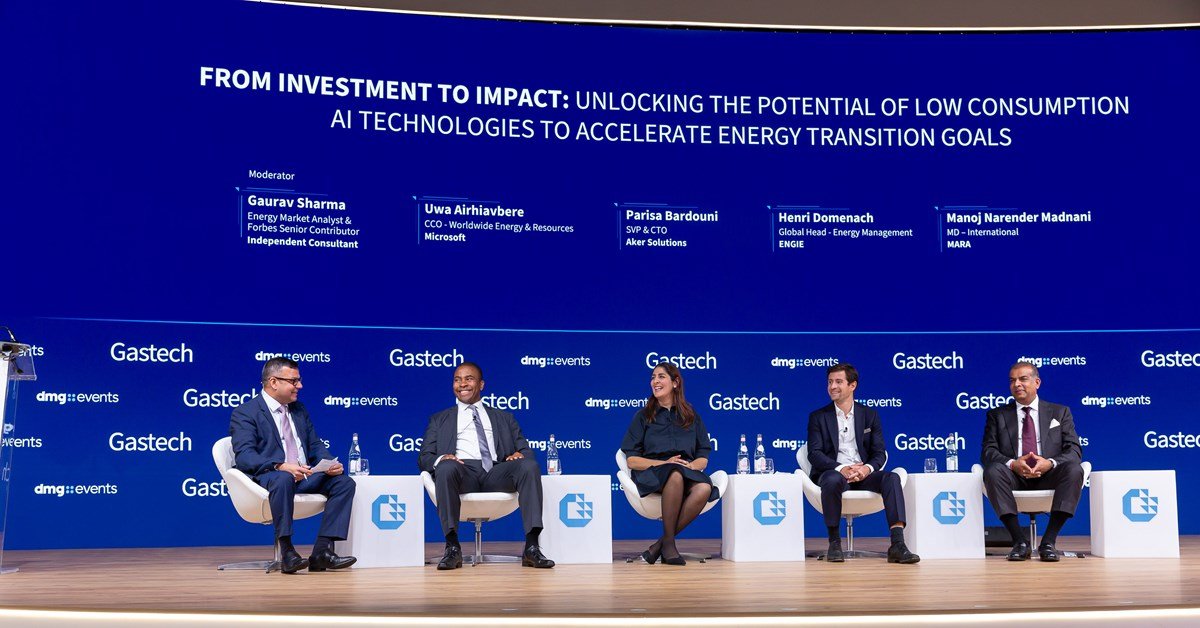Tools & Platforms
How do we unleash lightning in a bottle?

For months, a fierce debate has been unfolding between lawmakers and tech leaders over how — or even whether — to regulate artificial intelligence.
Tensions spiked when U.S. senators stripped a controversial provision from President Donald Trump’s “big, beautiful bill” that would have blocked states from regulating AI for the next decade. The move revealed sharp divides within the tech industry and between both political parties over who should hold the reins on this powerful technology.
J.D. Vance speaks at AI Action Summit in Paris
In February, Vice President J.D. Vance spoke at the Artificial Intelligence Action Summit in Paris, France, in front of business and world leaders, where he outlined the Trump Administration’s regulation plans.
“We believe that excessive regulation of the AI sector could kill a transformative industry just as it’s taking off, because deregulating AI,” Vance said. “This doesn’t mean, of course, that all concerns about safety go out the window, but focus matters, and we must focus now on the opportunity.”
AI leaders answer questions at U.S. Senate Commerce Committee
In May, leaders from AI-leading tech companies ChatGPT, CoreWeave, AMD, and Microsoft answered questions from a U.S. Senate Commerce Committee focused on how regulations could impact American AI competitiveness with tech markets in China and the European Union. However, while each company said they leaned toward less regulation when it comes to AI, their thresholds for that regulation differed.
OpenAI CEO Sam Altman said he understands companies need guardrails when developing and deploying AI solutions, but too much regulation could stifle growth.
“I have the great honor to be one of the parents of the many parents of the AI revolution, and I think it is no accident that that’s happening in America again and again and again, but we need to make sure that we build our systems and that we set our policy in a way where that continues to happen,” Altman said. “Of course, there will be rules. Of course, there need to be some guardrails. This is a very impactful technology, but we need to be able to be competitive globally.”
CoreWeave CEO Michael Intrator testified that a patchwork of regulatory overlays will cause friction.
“And the idea that you can make an investment that could then become trapped in a jurisdiction that has a particular type of regulation that would not allow you to make full use of it is really very, very suboptimal and makes the decision-making around infrastructure challenging,” Intrator said.
Microsoft president weighs in on AI debate
At the hearing, Microsoft President Brad Smith outlined a more balanced approach to running the AI race.
“It is a race that no company or country can win by itself,” he said. “To win the AI race, the United States will need to support the private sector at every layer of the AI tech stack. The nation will need to partner with American allies and friends around the world.”
Concerning whether or not the federal government should open the door for U.S. States to deregulate AI, Brad Smith told KIRO Newsradio in a one-on-one interview, “States have long played a critical role in, say, protecting children, protecting consumers, and it would be a mistake, in our view, if federal legislation were to preclude their ability to do that, especially under laws of long standing.”
Many congressional Republicans who supported Trump’s proposed regulation moratorium said it would not only prevent a patchwork of rules and regulations, it would ensure American tech companies could compete with recent Chinese breakthroughs in generative AI, like the MiniMax platform that specializes in transforming text into videos and Deep Seek, a more cost-effective solution than leading American models like OpenAI’s GPT-4. AI has scaled faster than ever in China, thanks to a mix of optimism about technology and flexible regulations ready to ebb and flow to keep pace with the U.S. and European Union.
Congressman Adam Smith calls for regulation
For many Democrats like Congressman Adam Smith, not only does he think states and the federal government need regulations, he told KIRO Newsradio we should also adopt smart regulations worldwide.
“I’m particularly worried about the Trump approach of sort of, basically, America is going to operate on its own and do our own thing,” Adam Smith said. “Well, the rest of the world is going to do their own thing, and then chaos is the likely result in a whole bunch of different areas.”
Vance: ‘We must focus now on the opportunity to catch lightning in a bottle’
So, what is the right answer for regulating AI?
“Focus matters, and we must focus now on the opportunity to catch lightning in a bottle, unleash our most brilliant innovators, and use AI to improve the well-being of our nations and their peoples,” Vice President Vance said in Paris.
Using that analogy, strict regulation could be like keeping lightning locked tight inside that bottle. Less regulation could mean letting a little bit of that lightning at a time, but not enough to burn down the house. And complete deregulation could be like letting that lightning loose and just hoping it doesn’t torch everything around us.
For Adam Smith, he said the debate won’t be over anytime soon.
“I’m sure that what we saw the last few weeks was the opening chapter of what will probably become a book of debate and law, and regulation, and there’s a number of chapters still to be written,” Adam Smith said.
Follow Luke Duecy on X. Read more of his stories here. Submit news tips here.
Tools & Platforms
Unlocking the potential of low consumption AI technologies

Artificial intelligence has sparked widespread concern surrounding not only its impact on jobs, but also its voracious appetite for electricity and ultimately its own environmental toll.
Industry leaders speaking at Gastech 2025 in Milan during a panel session titled ‘From investment to impact: Unlocking the potential of low consumption AI technologies to accelerate energy transition goals’ agreed that developing and deploying low-energy, high-impact AI solutions is essential to capitalise on this transformative technology while making the best use of its potential to aid in decarbonisation.
“AI is energy-hungry and it needs to be fueled heavily, and so there’s this growing demand for energy to fuel that,” said Uwa Airhiavbere, Chief Commercial Officer for Worldwide Energy & Resources at Microsoft.
Ultimately, by prioritising innovation that minimises energy consumption without compromising impact, stakeholders can ensure artificial intelligence delivers on its decarbonisation promise.
Airhiavbere stated that the true test of AI’s potential will not be just its intelligence, but its efficiency, also in terms of power consumption. Microsoft is tech provider as well as a significant energy consumer – he explained- and as such it is aiming to run all data centers in 24 countries on 100% renewable energy by year-end. It has also signed partnerships for nuclear energy and fusion energy to contain its impact on the environment. Forecast models are also part of the strategy.
“AI is energy-hungry and it needs to be fueled heavily, and so there’s this growing demand for energy to fuel that.”
– Uwa Airhiavbere, CCO – World Wide Energy & Resources, Microsoft
“We also have an inclusive, 24/7 carbon free matching, where we leverage our AI tools to match renewable energy hour by hour, to make sure that we’re not waiting to offset that energy use at the end of the year,” Airhiavbere said.
While artificial intelligence is poised to revolutionise industries and could add an estimated $13 trillion to the global economy by 2030 according to McKinsey, realising that promise depends entirely on sustainably meeting the substantial power demands of its data centers. This puts immense pressure on global energy providers who are already navigating a complex transition.
Long-term sustainable
From the perspective of energy management, the integration of AI is a delicate balancing act, explained Henri Domenach, Global Head of Energy Management at ENGIE.
“Ai is a great opportunity; we need to turn it in a long-term sustainable technology” with a more efficient management of the power needs. Domenach stressed that the integration of AI will itself help optimise the production and reduce carbon footprints. He cited improvements in renewable energy forecasting, crucial for grid stabilisation and value improvement, and a recent commissioning of a 100 MWh battery in Belgium.
Parisa Bardouni, Senior Vice President and Chief Technology Officer at Aker Solutions, said, “There is a lot to gain from collaborations and alliances among technological and energy companies as well as with customers and consumers” to find the best ways to address the AI’s power hunger.
Convergence strategy
“You need to have gas, you need to have nuclear, you need to have renewable — you cannot rely on one specific feedstock because you need to have a resilient grid to power the AI,” said Manoj Narender Madnani, Managing Director for International at MARA.
The convergence of AI and energy management, therefore, presents a clear opportunity to activate transformative solutions. These advancements could serve as a powerful catalyst for a cleaner, more streamlined energy future, driven by innovation in both hardware and software.
Increasingly, “there is a fine line between top tech companies and top energy companies,” Madanani added, saying that he would not be surprised to see some of the former become also energy businesses to better manage the artificial intelligence’s power needs.
Tools & Platforms
Unisound AI Technology (SEHK:9678): Does the Current Valuation Reflect Future Growth Potential?

Unisound AI Technology (SEHK:9678) caught the attention of investors this week with a move in its share price, prompting debate about what might be driving momentum, or if it signals fresh risks or opportunity for the company. While there hasn’t been a clear event or announcement to point to, these kinds of movements often act as a spark for investors to take a closer look at what’s happening under the hood, especially when it comes to future prospects versus the current price tag.
Stepping back, Unisound AI Technology’s performance over the year has painted a mixed picture. After gaining nearly 99% year-to-date, the stock has seen a more subdued run lately, with a modest uptick over the past day but declines across the month and week. For a company with ambitions in AI technology, such swings are a reminder that investors are constantly fine-tuning their expectations, whether that’s in response to sector enthusiasm, competitive concerns, or changes in risk appetite.
So is the recent slip a sign that the shares are set up for a rebound, or are markets wisely factoring in the next chapter of growth already? Let’s dig into the valuation to see what the numbers tell us.
Price-to-Sales of 22.3x: Is it justified?
Unisound AI Technology currently trades at a price-to-sales (P/S) ratio of 22.3, making it appear significantly more expensive than both the Hong Kong Software industry average (2.8x) and its closest peers (6.3x).
The price-to-sales ratio compares a company’s market value to its revenue, serving as a key measure for businesses that are not yet profitable. For technology and software firms, investors often use P/S when earnings are negative or volatile, as it provides a way to assess how much the market is willing to pay for each unit of sales.
A P/S ratio this elevated suggests investors are pricing in substantial growth or market dominance in the future. However, such a premium also signals heightened expectations. Unisound must deliver meaningful revenue acceleration to justify this multiple, especially given its current unprofitability.
Result: Fair Value of $589.00 (OVERVALUED)
See our latest analysis for Unisound AI Technology.
However, weak revenue growth and sustained losses remain key risks. These factors could undermine the high valuation and dampen near-term investor confidence.
Find out about the key risks to this Unisound AI Technology narrative.
Another View: What Does Our DCF Model Say?
Taking a different approach, our SWS DCF model also sizes up Unisound AI Technology but finds no reason to challenge the lofty price. It flags the stock as overvalued based on future cash flows. Could this reinforce market caution, or is there still something the market sees that is missed in the numbers?
Look into how the SWS DCF model arrives at its fair value.
Stay updated when valuation signals shift by adding Unisound AI Technology to your watchlist or portfolio. Alternatively, explore our screener to discover other companies that fit your criteria.
Build Your Own Unisound AI Technology Narrative
If you have a different perspective or want to dig into the numbers yourself, you can easily craft your own assessment in just a few minutes. Do it your way.
A great starting point for your Unisound AI Technology research is our analysis highlighting 1 key reward and 2 important warning signs that could impact your investment decision.
Looking for more investment ideas?
Smart investors keep their eyes open for every opportunity. Don’t limit your research to one stock when you could be finding tomorrow’s standouts right now.
- Spot undervalued companies with robust cash flow using our powerful tool for those seeking undervalued stocks based on cash flows in overlooked corners of the market: undervalued stocks based on cash flows
- Unlock the income potential of markets and track high-yield opportunities with our selection of dividend stocks with yields > 3%: dividend stocks with yields > 3%
- Stay on the forefront of digital innovation by tracking the movers and shakers among cryptocurrency and blockchain stocks that are powering the next financial revolution: cryptocurrency and blockchain stocks
This article by Simply Wall St is general in nature. We provide commentary based on historical data
and analyst forecasts only using an unbiased methodology and our articles are not intended to be financial advice. It does not constitute a recommendation to buy or sell any stock, and does not take account of your objectives, or your
financial situation. We aim to bring you long-term focused analysis driven by fundamental data.
Note that our analysis may not factor in the latest price-sensitive company announcements or qualitative material.
Simply Wall St has no position in any stocks mentioned.
New: AI Stock Screener & Alerts
Our new AI Stock Screener scans the market every day to uncover opportunities.
• Dividend Powerhouses (3%+ Yield)
• Undervalued Small Caps with Insider Buying
• High growth Tech and AI Companies
Or build your own from over 50 metrics.
Have feedback on this article? Concerned about the content? Get in touch with us directly. Alternatively, email editorial-team@simplywallst.com
Tools & Platforms
Rochester Cloud Connect Summit to Feature Nationally-Recognized AI, Cyber Experts
FirstLight Announces High-Impact Cloud Connect Summit in Rochester, Showcasing Leaders in Cybersecurity, AI, and Cloud Innovation
ALBANY, N.Y., Sept. 11, 2025 /PRNewswire/ — FirstLight, a leading provider of digital infrastructure services to enterprise and carrier customers throughout the Northeast and mid-Atlantic, is bringing its highly anticipated Cloud Connect Summit to Rochester, NY. The event will take place October 2nd at the historic George Eastman Museum, gathering technology leaders and innovators for an afternoon of forward-looking insights, powerful discussions, and high-level networking.
Known as one of the premier IT events in the region, Cloud Connect Summit brings together top minds in cybersecurity, artificial intelligence, and cloud computing to explore the trends and technologies reshaping today’s digital landscape. FirstLight is proud to serve as title sponsor, with additional sponsorship from industry leaders Veeam and Ciena.
The speaker lineup features an impressive roster of thought leaders and innovators:
- Colonel Craig E. Frank, Director of S-6 (Communications) at Space Systems Command, Los Angeles Air Force Base — leading a team of 85 specialists in cybersecurity, digital engineering, and technology strategy.
- Matthew Wright, PhD, Kevin O’Sullivan Endowed Professor and Chair of Cybersecurity at Rochester Institute of Technology — a globally recognized researcher with over 100 peer-reviewed publications on cybersecurity, human-computer interaction, and networks.
- Rick Vanover, Senior Director of Product Strategy at Veeam — presenting the latest insights from a sweeping survey of 1,000 companies on ransomware resilience and defense strategies.
- Erich Kron, cybersecurity speaker, author, and KnowBe4 expert — a seasoned security leader with decades of experience across information security, project management, and senior leadership roles.
The day’s program will include dynamic presentations, interactive discussions, and actionable takeaways, capped off with cocktails and networking among peers and industry experts.
“This is more than an event – it’s a forum for sparking ideas, sharing strategies, and connecting with the people shaping the future of AI and Cybersecurity,” said Lorenzo Leuzzi, Chief Revenue Officer at FirstLight.
Registration is now open at www.cloudconnectsummit.com. For a limited time, attendees can waive the registration fee with code “FirstLight.”
About FirstLight Fiber, Inc.
FirstLight, headquartered in Albany, New York, provides fiber-optic data, Internet, data center, cloud, unified communications, and managed services to enterprise and carrier customers throughout the Northeast and mid-Atlantic with more than 125,000 locations serviceable by our more than 25,000-route mile network. FirstLight offers a robust suite of advanced telecommunications products featuring a comprehensive portfolio of high bandwidth connectivity solutions including Ethernet, wavelength and dark fiber services as well as dedicated Internet access solutions, data center, cloud and voice services. FirstLight’s clientele includes national cellular providers and wireline carriers and many leading enterprises, spanning high tech manufacturing and research, hospitals and healthcare, banking and financial, secondary education, colleges and universities, and local and state governments.
To learn more about FirstLight, visit www.firstlight.net, or follow the company on X, LinkedIn and Instagram.
Media Contact:
John Romagnoli
[email protected]
SOURCE FirstLight Fiber

-

 Business2 weeks ago
Business2 weeks agoThe Guardian view on Trump and the Fed: independence is no substitute for accountability | Editorial
-
Tools & Platforms1 month ago
Building Trust in Military AI Starts with Opening the Black Box – War on the Rocks
-

 Ethics & Policy2 months ago
Ethics & Policy2 months agoSDAIA Supports Saudi Arabia’s Leadership in Shaping Global AI Ethics, Policy, and Research – وكالة الأنباء السعودية
-

 Events & Conferences4 months ago
Events & Conferences4 months agoJourney to 1000 models: Scaling Instagram’s recommendation system
-

 Jobs & Careers2 months ago
Jobs & Careers2 months agoMumbai-based Perplexity Alternative Has 60k+ Users Without Funding
-

 Podcasts & Talks2 months ago
Podcasts & Talks2 months agoHappy 4th of July! 🎆 Made with Veo 3 in Gemini
-

 Education2 months ago
Education2 months agoMacron says UK and France have duty to tackle illegal migration ‘with humanity, solidarity and firmness’ – UK politics live | Politics
-

 Education2 months ago
Education2 months agoVEX Robotics launches AI-powered classroom robotics system
-

 Funding & Business2 months ago
Funding & Business2 months agoKayak and Expedia race to build AI travel agents that turn social posts into itineraries
-

 Podcasts & Talks2 months ago
Podcasts & Talks2 months agoOpenAI 🤝 @teamganassi






















